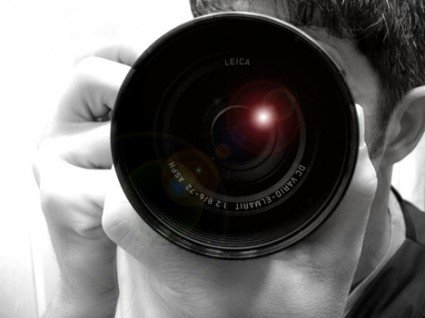Photography involves much more than just picking up a camera and taking a clear shot. It is more of an artistic expression. The art itself is versatile and can represent many things. Each of these techniques requires strict attention to detail and a sense of what will make a unique and interesting photograph. Take a look at the tips below to start getting more artistic with your photographs.
Come closer to the subject, so you can snap a better photo. This allows you to eliminate disruptive backgrounds and frame your subject. It will also help you notice facial expressions, which are important factors for all portrait photographers. Camera image sensors are only so good, so long-range shots sacrifice detail.
Make sure you know exactly what is going into each photograph. A great photo will be like you are looking at your object through a little window. Don’t try to show too much. If you want a better impression of a subject, take as many photos as you can.
A lot of people think beautiful, sunny days are good pictures, but direct sunlight can actually harm a photo sometimes. Not only will it cast glaring and awkward shadows, it also causes highlights to be uneven and it makes your subjects squint as they face the camera. It is always wise to shoot either early in the morning, or later in the evening for the best outdoor pictures.
Do you want to work with exposure? Learn as much as you can about the speeds your shutter has. These are labeled S, A, M an P on your camera. The ‘P’ button will take you to the program mode. This setting is fully automated and will set both the shutter speed and aperture for you. If you are unsure of what you’ll be taking a picture of, use P.
When taking pictures of people, make sure that the background is slightly blurred. Having a sharply focused background can detract from your subject matter, making it difficult for any viewers of your photo to focus the way you intend them to. You can accomplish this by having your background further away from your subject.
Be prepared to take notes when you practice photography. If you take countless photos, it may be hard to recall why or where you took them. Use a notepad to write down photo descriptions as well as the file name or number of the photo.
You are permitted to move your subject in order to discover a unique shot. Experiment with taking a picture above and below your subject, as well as moving off to the side.
External Flash
The majority of digital cameras now come with a feature that automatically uses the flash whenever the area you are photographing is too dim. Built in flashes are great for your average photographs, but for a more professional look, you may want to consider an external flash. Try to get a camera with what is known as a “hot shoe” that can take an external flash, and make sure to ask a professional camera shop if it will sync with the camera.
Consider enrolling in a photography group, or team up to take shots with a photographer who shares your interests. You can pick up certain techniques from others, but you do need to strike out and develop your own style. When joining forces with another photographer, compare and contrast your photos of the same subjects, so you can get an idea of how images of identical objects can vary in appearance when taken through the perspective of two different people.
Regardless of whether you are pursuing photography as a hobby or career, good composition is the key to taking high quality photos. As with many other forms of art, a lack of composition will result in an inferior piece of work. After you have done your research into composition, practice putting it to use and after some time you will see that your images have improved greatly.
By this point, you should realize that there is more to photography than just keeping the subject in focus. Your photos will become better overnight if you take the preceding advice seriously.








